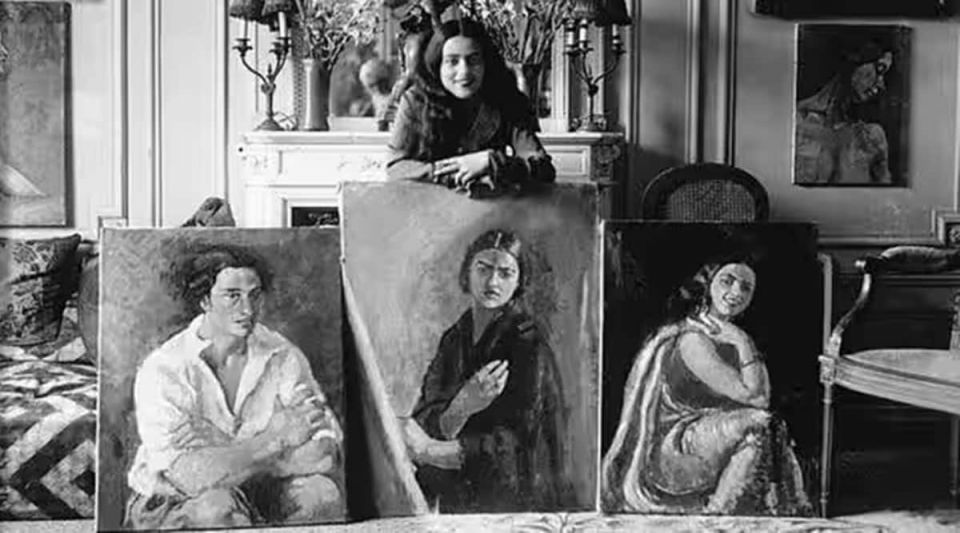
Amrita Sher-Gil "sought inspiration in Pahari paintings" to paint The Story Teller.
Painted during an important period in her oeuvre, Amrita Sher-Gil’s 1937 canvas The Story Teller sold for a whopping Rs 61.8 crore ($7.44 million) on September 16, setting a world record for the highest price achieved by an Indian artist.
The iconic work led Saffronart’s Evening Sale: Modern Art, which featured more than 70 artworks from prominent artists, including significant works by modern masters V S Gaitonde and S H Raza, and early works by Tyeb Mehta, M F Husain, F N Souza, and Akbar Padamsee.
Before this sale, the most expensive Indian artwork sold at an auction was S H Raza’s Gestation, which had fetched ₹51.75 crore.
Describing the significance of the Sher-Gil artwork, a note released by Saffronart before the auction had pointed out it was executed “during an important formative period in the artist’s oeuvre that saw her European and Indian influences merge into a unique artistic language”.
In one of the “few works that she painted en plein air”, the release added, “The dominant subjects are women—who feature in many of her works—depicted as close-knit figures, crafting an inherent intimacy within the canvas. The work is an example of the artist’s most honest and expressive compositions, one that Sher-Gil herself was especially fond of as evidenced by the numerous mentions of this work in her letters.”
A note on The Story Teller on the Saffronart website quotes art connoisseur Karl Khandalavala suggesting that “it sought inspiration in Pahari paintings”. “The cows, the women folk, and the setting, though all far removed in technique from those of Basohli miniature, are pregnant with its lyricism and vivid colour,” states Khandalavala.
Born in 1913 in Budapest to an Indian Sikh aristocrat father and Hungarian-Jewish opera singer mother, Sher-Gil was eight when she moved to Shimla. Though she was already painting, her uncle Ervin Baktay encouraged her to develop her own vocabulary and pursue formal training.
During her student days at the Ecole des Beaux-Arts in Paris in the early ’30s, she was greatly influenced by post-impressionism and bohemian culture.
Her oeuvre had several self-portraits and nude studies as well as traditional influences that came from miniatures, Ajanta paintings and her travels across India. In a letter to a friend, she reportedly wrote, “I can only paint in India. Europe belongs to Picasso, Matisse, Braque… India belongs only to me”.
One of the country’s foremost artists, she died young at the age of 28 in 1941. She has been declared a “national treasure” by the Indian government, which prohibits her works in India from being exported to other countries.








